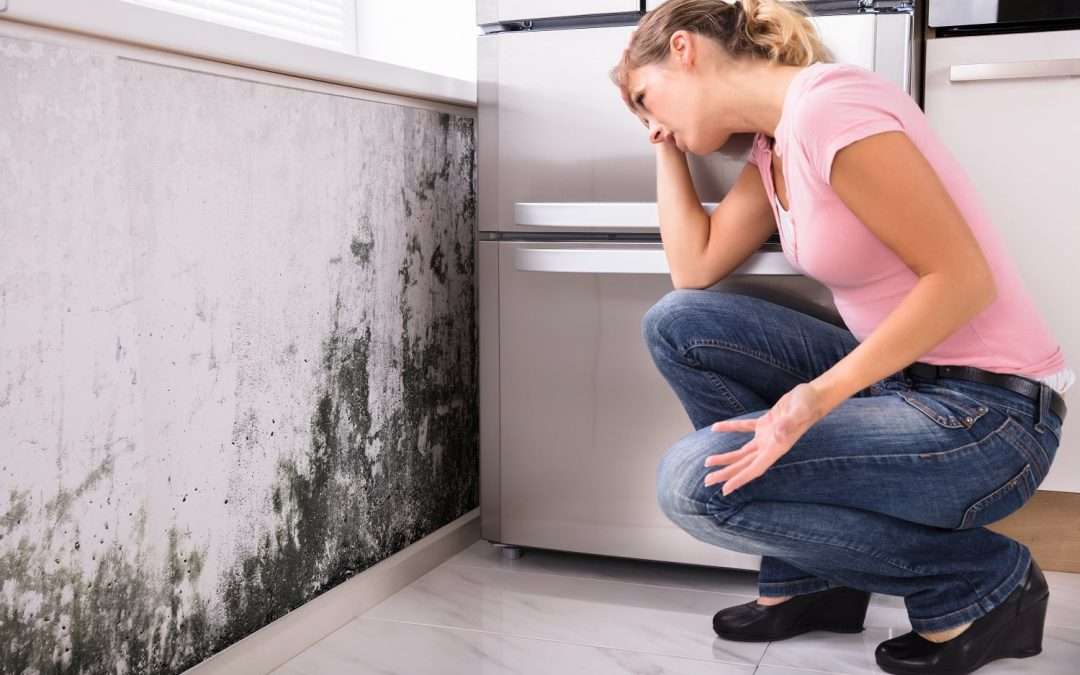Mold, The Smelly Killer
There’s a musty smell in your basement bathroom. It’s not strong enough to make you nauseous, but it’s unpleasant. You can’t ignore it. It’s mold, and it’s a hazard to your health and home. Here’s what you need to know about mold.
Hazard Classes
 Mold falls into three hazard classes: A, B, and C.
Mold falls into three hazard classes: A, B, and C.
Class A molds are the most hazardous. Exposure to Class A mold will result in headaches, fever, coughing, severe allergic reactions, and some are even known to cause cancer.
Class B molds are potentially dangerous because they produce allergic reactions in some people. The reactions become stronger the more you are exposed to them. They can worsen asthma and cause serious breathing problems.
Class C molds are not known to be hazardous to health and are not known to cause allergic reactions. They’re still a problem, however, because they destroy paint, drywall, and wood. An infestation of Class C mold will ruin the value of your home.
Most molds in your home will fall into Class B, but regardless of their class, you should take care of them as soon as you find them.
How Does Mold Grow?
Mold reproduces by spores, which are spread through the air. They begin to grow as soon as they land on a material that provides them with what they need.
First, they need a food source, like wood, drywall, or cotton. Secondly, they need moisture and oxygen. It also can’t grow under ultraviolet light, so they colonize dark places. Finally, they need warmth, as the cold makes spores go dormant. When these conditions are met, it can start to grow in 24-48 hours.
Where Does It Grow?
Mold can grow just about anywhere when the conditions are right. They prefer to grow on porous, organic surfaces. The most vulnerable materials are wood, drywall, and paper. If mold takes root in them, it’s impossible to remove it. Once it infects these materials, you must remove and replace them.
It can also grow on tiles and concrete, though since these are not organic materials, they aren’t growing on them directly. Usually, they have some organic material on them, such as dust, or dead skin. Since it isn’t growing on these materials, it’s fairly easy to clean them off. You can often wipe it off with a damp cloth. You can also find mold killing products at home and garden stores that help.
Your Basement is the Most Vulnerable Place
Given the conditions required for mold to grow, the most vulnerable place in your house will be the basement. It’s underground, so it rarely gets direct sunlight. Basements tend to be poorly ventilated, so you get pockets of stale, moist air. As the lowest point in your home, water will always flow towards it when you have a leak or a flood. All of these conditions combine to make basements the perfect breeding ground. You should regularly check your basement if you want to keep your house healthy.
5 Signs of Mold Infestation
- Odd Smells: Unexplained musty smells are a good indicator of an infestation.
- Peeling Wallpaper: Wallpaper is a good source of food for mold. If it takes root, it will cause it to peel, crack, or bubble.
- Dark Colored Spots: Mold comes in a variety of colors. If you see any dark, discolored spots on any surface, that’s probably mold growing on it.
- Recent Water Damage: With the wet spring we’ve had this year, this is going to be a problem. Water damage creates excellent places for spores to grow, so if you’ve recently experienced flooding or leaks, have your home inspected for mold.
- Health Issues: The health effects include worsening asthma, cold symptoms that won’t go away, or allergic reactions. If you suffer from these symptoms, you might want to have your home checked.
Be Safe
 Here at Alpine Cleaning and Restoration, we’re mold experts. If you’ve noticed signs of mold in your home or office, get in touch with us right away. Alpine can do testing in your home to find it. Don’t delay, since the longer it goes untreated, the more difficult and costly it becomes to remove it.
Here at Alpine Cleaning and Restoration, we’re mold experts. If you’ve noticed signs of mold in your home or office, get in touch with us right away. Alpine can do testing in your home to find it. Don’t delay, since the longer it goes untreated, the more difficult and costly it becomes to remove it.
We can take care of the problem from start to finish. We’ll identify, contain, and remove the mold, and then treat the area afterwards to help prevent further breakouts. We’ll also help you find the source of the mold, fixing leaky pipes, condensation, and anything else that might be contributing to the infestation. We do it all.

